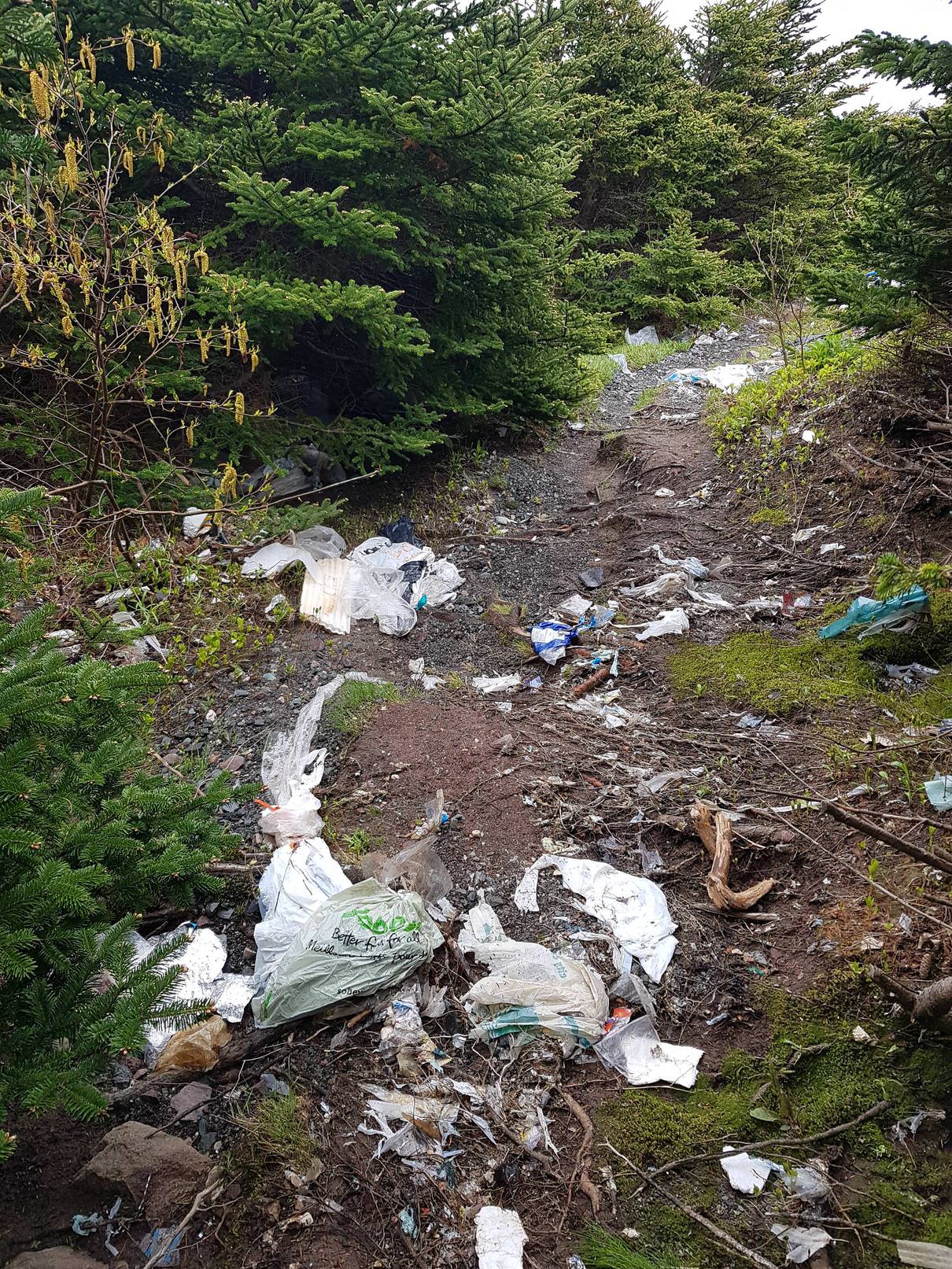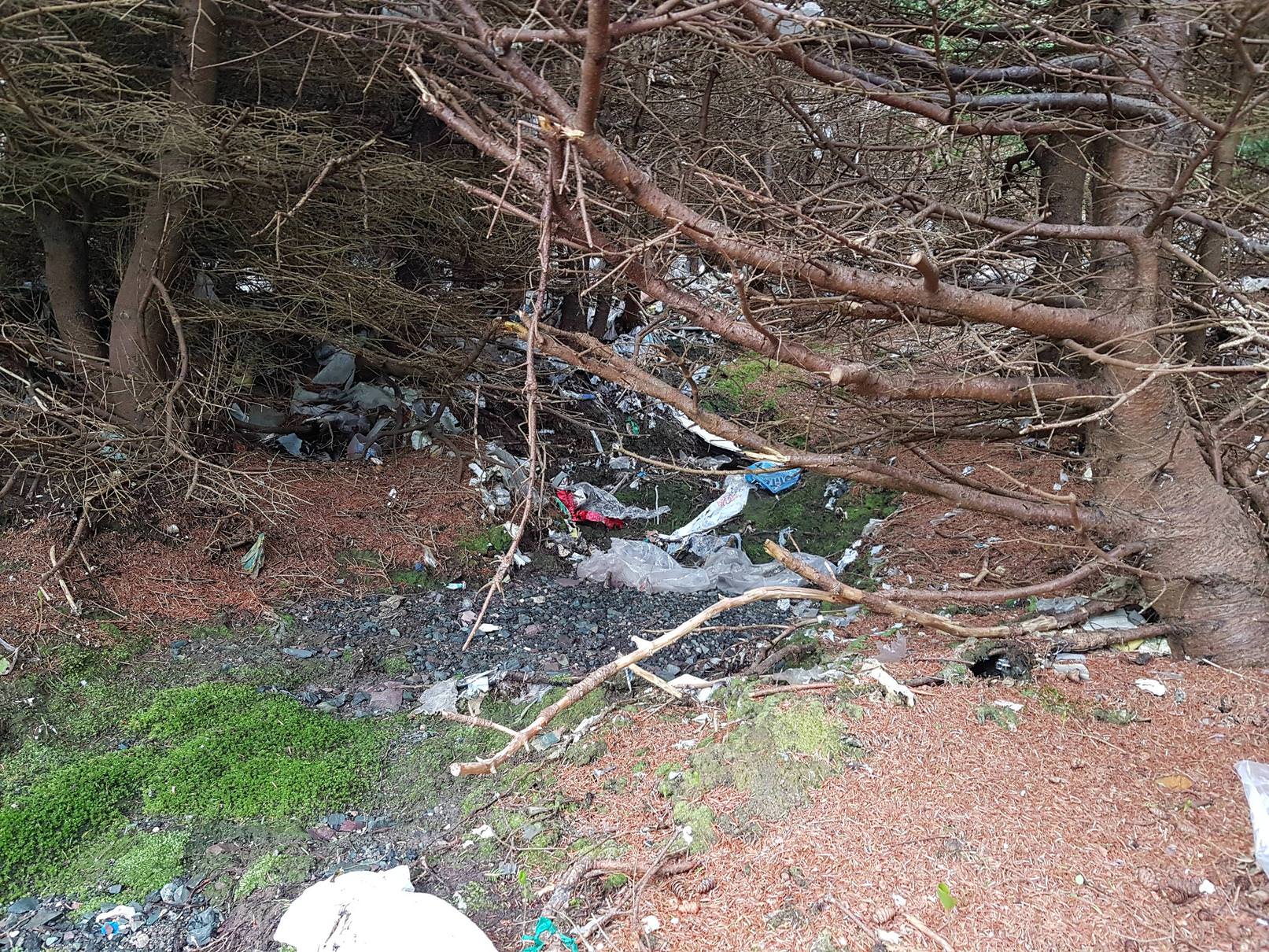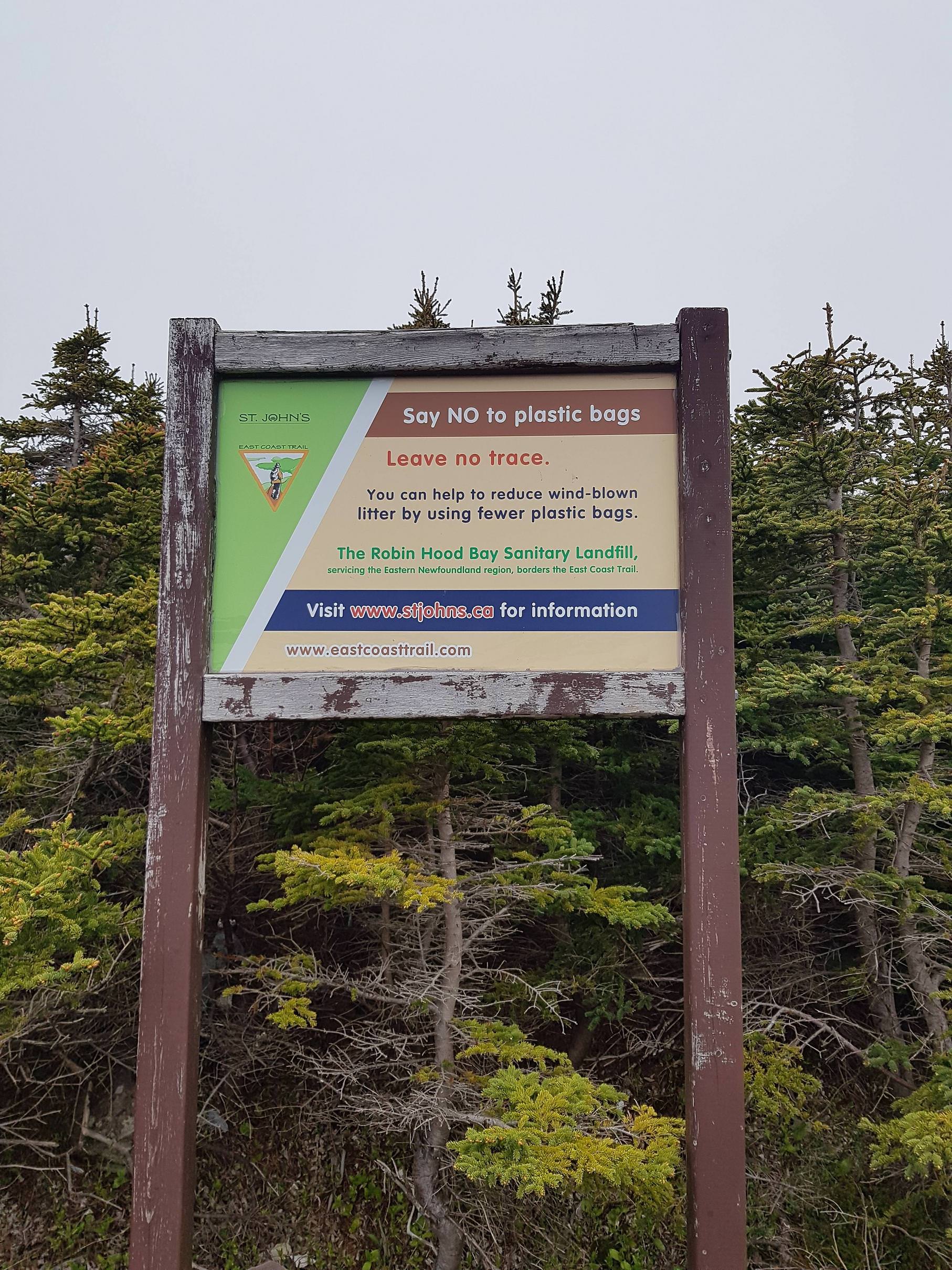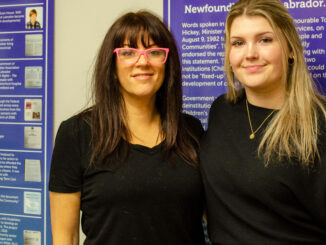The section of the East Coast Trail dubbed the plastic forest has the potential to cause a lot more harm than we think.

Margaret Harvey
Kicker
If you’ve ever hiked the East Coast Trail, its beauty is evident – the sound of the waves crashing against the coastline, the smell of the salt water, the crunch of the earth beneath your shoes.
The view alone is stunning. It’s one of Newfoundland’s greatest treasures.
If you’ve hiked Sugarloaf Path, the almost nine kilometre section of the trail that stretches from Marine Lab Rd. in Logy Bay to Quidi Vidi, the pleasant experience disappears as you come upon the section behind the Robin Hood Bay Landfill.
The sounds beeping of trucks and tiny explosions echoes through the forest during the weekdays. The faint smell of garbage only gets worse while traversing deeper into the littered trail. The worst part is seeing what the trail turns into. Eventually, the trash is everywhere – hanging from the trees in twisted tangles and seemingly growing from the earth. It’s inescapable. But, it’s not from people littering. Newfoundland winds sweep the garbage from the landfill over their fence and into the forest and ocean.
That part of the trail has been dubbed the plastic forest.
The East Coast Trail Association is well-aware of the problem. Their last big cleanup was in June 2018. It involved over 20 volunteers. It took a full day and they collected over a ton of garbage.
Organizers said it was one of the largest amounts of garbage they have seen (and cleaned up) in recent years.

Gail Barnes is the vice -president of marketing and communications with the East Coast Trail Association.
“It’s complicated and there’s a lot of people that work incredibly hard to fix that problem and to keep it fixed,” said Barnes.
“There’s no magic solution. We have waste, we use plastic … and managing that waste is a challenge for any municipality.”
But the lack of trail maintenance isn’t the issue. It’s the effect the plastic waste has on the forest and the ocean.
When plastic of any kind begins to break down, little particles called microplastics get left behind. These microplastics are smaller than a grain of rice. This minuscule debris left behind from larger plastics damages forest and ocean life.
These microplastics make their ways into oceans, then fish, and straight back into the food chain. A research team at Memorial University is committed to monitoring animals caught for food in the province to see if they contain microplastic contaminants.
With over 1,000 Atlantic cod examined, they determined that 1.68 per cent of them had ingested microplastics.
Maggie Burton, a St. John’s councillor at large, said the city partners with the East Coast Trail Association to do cleanups like the one in June.
“The simplest way to protect the ocean would be to get rid of plastic bags.”
Burton said the first time she saw the forest really made it clear to her how much the province needs a plastic bag ban.

“The trees act as a bit of a natural barrier (for) the ocean, to keep the plastic bags out, but they shouldn’t have to play that role,” Burton said.
“The simplest way to protect the ocean would be to get rid of plastic bags.”
But it isn’t just plastic bags people should be concerned about. It’s all single-use plastics, and even fishing gear, which takes up 46 per cent of the Great Pacific Garbage Patch.
“As a province that fishes, I think that we could take a hard look into how we could keep some more of those net particles out of the ocean and we need to take a broader look at single-use plastics in general,” Burton said.
By 2050, one study is predicting there will be more plastic in the ocean than fish.
“Our ocean is really stressed out by plastic,” Burton said, “It’s really important for us to care about the longevity of oceans and the animals that live within them.”




Be the first to comment